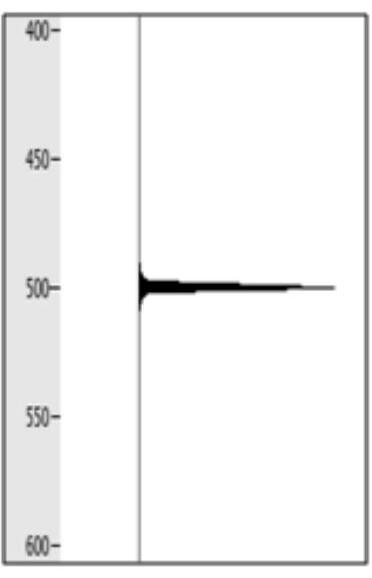A Compensation Method for Low Frequency Energy of Seismic Signals
A low-frequency energy and seismic signal technology, applied in seismic signal processing and other directions, can solve problems such as inappropriate seismic signal acquisition methods, and achieve the effect of good algorithm stability
- Summary
- Abstract
- Description
- Claims
- Application Information
AI Technical Summary
Problems solved by technology
Method used
Image
Examples
Embodiment 1
[0108] Pulse test analysis
[0109] Pulse testing is the most basic method to verify the correctness of mathematical algorithms. Adopt the above-mentioned low-frequency energy compensation method of the present invention to analyze the pulse test result, Fig. 1 (a) is the pulse spectrum that does not carry out low-frequency energy compensation of test, Fig. 1 (b), Fig. 1 (c), Fig. 1 (d), Figure 1(e) is the compensation result diagram of different operators respectively, figure 2 Pulse amplitude spectra under different compensation parameters in Example 1 of the present invention.
[0110] By applying this method, the compensated spectrum ( figure 2 ) The low-frequency energy (especially below 20Hz) is significantly enhanced, and the corresponding symbols on the spectrogram are (b) (c) (d) (e), and the low-frequency energy is gradually enhanced.
Embodiment 2
[0112] Synthetic record test analysis
[0113] Figure 3(a) is the designed synthetic record. The energy of different frequencies is basically uniform. Operators with different parameters are used to compensate the low frequency of the synthetic record. The results are shown in Figure 3(b)(c)(d)(e). Figure 4 For the corresponding amplitude spectrum, the comparison shows that this method retains the relative change law of the designed reflection coefficient, compensates the low-frequency components, and highlights the energy reflected by the interface.
[0114] By applying this method, the low-frequency energy of the compensated spectrum ( Figure 4 ) (especially below 20Hz) is significantly enhanced, and the corresponding symbols on the spectrogram are (b) (c) (d) (e), and the low-frequency energy is gradually enhanced.
Embodiment 3
[0116] Raw Single Shot Record Test
[0117] During the acquisition process of seismic exploration, because the frequency range received by the geophone and the instrument is not all-pass, it is often to avoid surface waves and strong low-frequency interference, and to prevent record overshooting. Limitations are designed at the low-frequency end, generally due to the lack of low-frequency energy . The low-frequency component of the seismic reflection wave has a strong penetrating ability, which is more conducive to imaging the surface of the buried hill and the inside of the buried hill.
[0118] Figure 5(a) is the original single-shot record, and Figure 5(b)(c)(d)(e) is the result of low-frequency compensation of the data with different parameters. With the enrichment of low-frequency components, the energy of mid-to-deep reflection waves gradually increases, and the reflection characteristics of the buried hill surface and the underlying strata are clear. Image 6 is the a...
PUM
 Login to View More
Login to View More Abstract
Description
Claims
Application Information
 Login to View More
Login to View More - R&D
- Intellectual Property
- Life Sciences
- Materials
- Tech Scout
- Unparalleled Data Quality
- Higher Quality Content
- 60% Fewer Hallucinations
Browse by: Latest US Patents, China's latest patents, Technical Efficacy Thesaurus, Application Domain, Technology Topic, Popular Technical Reports.
© 2025 PatSnap. All rights reserved.Legal|Privacy policy|Modern Slavery Act Transparency Statement|Sitemap|About US| Contact US: help@patsnap.com



